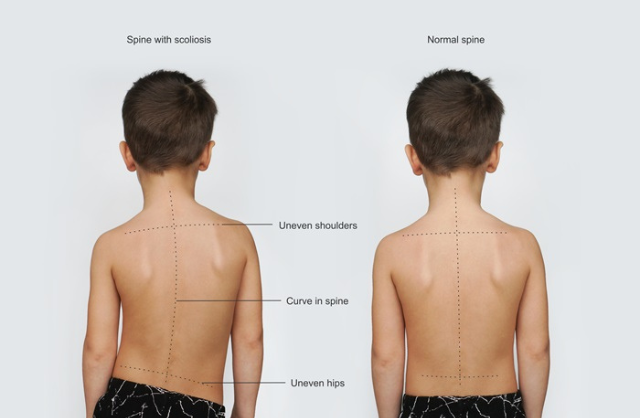- 22 May 2025
10 Medical Conditions Affecting Down There
Penis Health is something usually people donot talk about but is an important part of a Man’s health as the primary functions of the penis are urinary and sexual.
Let’s talk about the disorders & diseases that can undermine the function and structure of the penis.There are quite a few types of conditions affecting penile health as well as function,some are minor and not causing serious harm while some seek immediate medical treatment or surgery.
Other than problems related to structure & function of penis,such penile issues may also impact other areas of a man’s life causing stress, relationship problems or poor self-confidence.
In this article, we will know the signs and symptoms of penis problems and what can be done to protect your penis health.
Penile conditions can be congenital which means since birth also these can be developed over time.
Congenital Penile Abnormalities
Congenital disorders are those which are present right from the birth and caused by an imbalance of hormones that influence penis development.
Following are several congenital conditions that can cause a penis to be abnormally formed:
1. Hypospadias
Hypospadias refers to a congenital condition in male infants where the urethral opening is located on the underside of the penis rather than at its tip. It remains one of the most frequently seen congenital malformations in males.
In contrast, Paraphimosis is a condition where the foreskin, once retracted, cannot return to its original position over the glans penis. This leads to complications such as penile swelling, pain, bruising or discoloration, and difficulty urinating.
Management of paraphimosis typically begins with conservative measures such as applying ice to reduce swelling or manually compressing the glans to expel blood and fluid. If these methods fail, medications may be injected to facilitate drainage. In more severe or unresponsive cases, circumcision may become necessary.
2. Epispadias
Epispadias is a rare congenital condition in which the urethral opening is located on the upper (dorsal) surface of the penis, causing urine to exit from an abnormal site. Though it shares similarities with Hypospadias, epispadias is significantly less common and tends to be more severe.
This condition not only involves an abnormal urethral opening but is often accompanied by a smaller-than-average penis and an abnormally developed bladder neck. These additional abnormalities contribute to the increased complexity and seriousness of the defect.
Typical signs of epispadias include:
- An ectopic urethral opening on the top or side of the penis
- In some cases, the urethra may remain open along the entire penile shaft
- Penile curvature or an irregular penile shape
- Widened pubic bones
- Urinary incontinence
- Recurrent urinary tract infections (UTIs)
- Vesicoureteral reflux, where urine flows backward toward the kidneys
Severity can vary from mild to extensive. In moderate to severe cases, surgical intervention is necessary to improve urinary function, restore penile length, and achieve a more typical appearance. When the bladder is also affected, surgery aims to reconstruct a functional urinary channel for normal urination.
Surgical correction is typically initiated around 6 months of age, with additional reconstructive procedures performed as the child grows, addressing malformations in the bladder neck, pelvic bones, and surrounding structures.
3.Chordee
Chordee is an abnormal curvature of the penis which is developed in an unborn baby boy.This condition is more common in boys with hypospadias (mentioned above) but some boys who are not diagnosed with hypospadias may develop this abnormal penile condition too.
Classic sign of chordee is a penile curve which gets more significantly visible as the child ages.
Standard treatment for chordee is a surgical intervention by paediatric Urosurgeon. If it is left untreated, it may impact one’s sexual life. This condition is most noticeable during an erection, at times it is painful too.
Surgery can be done at the age of 1 year. Main purpose of surgery is to provide a normal cosmetic appearance as well as normal function of penis.
4.Micropenis
Micropenis as the name depicts, this medical condition is marked with an abnormally small penis but with normal structure. It is defined as a stretched penis length that is at least 2.5 times smaller than what it should be at that particular stage of a boy's development.
This condition is not so common. It is thought to be caused by abnormally low production of male hormones, called androgens during gestation.
There is no cure for micropenis but in children hormone therapy can help to stimulate penile growth. Every child is different so results may vary from child to child. Experts recommend starting Testosterone therapy/Hormone therapy in early childhood for better outcomes.
Surgery termed as Phalloplasty or Penile enhancement surgery is the choice of surgical treatment in case of young adults.
5.Phimosis and Paraphimosis
Phimosis is a penile condition in which the foreskin of penis is so tight making it difficult to retract or pull back the foreskin to reveal the head of the penis.Phimosis is common in infants but tends to resolve on its own by the age of 3 years.
Phimosis is normal in babies and it is not usually a problem unless it causes complications such as bleeding, infection around foreskin or painful urination.
But in cases where boys cannot retract their foreskin by the time they are adolescents, they may need treatment.Because in adults phimosis is associated with severe complications like pain while erection, scarring of foreskin,swelling and redness of the glans,recurrent urinary tract infection.
Treatments include gentle, manual stretching of the foreskin over a period of time, applying steroid creams to loosen the foreskin and surgical removal of skin called circumcision in some cases is required.
It is advised to seek immediate medical attention if the condition makes urination difficult or impossible.
Paraphimosis is a condition that makes repositioning the foreskin difficult, that means foreskin once retracted cannot return to its original location.
Symptoms of paraphimosis include inability to return foreskin to its normal position, difficulty with urination, discoloration or bruising of the penis, and swelling of the penis.
Treatment for paraphimosis include application of ice that may help reduce swelling or a pressure may be applied to the glans to force out blood and fluid.If these measures fail to reduce swelling and allow the foreskin to return to its normal position, an injection of medication to help drain the penis may be necessary.In severe cases, circumcision is required.
Penile Dysfunction and Diseases in Adults
There are a number of penile conditions that may develop in later life affecting the glans, foreskin, urethra, or erectile tissues.Following are some of the more common disorders and conditions that develop later in life are:
6. Balanitis
Balanitis describes the inflammation of the glans penis. When both the glans and foreskin are inflamed, the condition is referred to as Balanoposthitis. Symptoms may include itching, swelling, redness, a rash on the penis, pain, and a foul-smelling discharge.
Though more common in males over 40, it can occasionally affect children. Poor genital hygiene, particularly in uncircumcised males, is a leading cause. Accumulated bacteria, sweat, debris, and dead skin under the foreskin can trigger inflammation.
Other possible causes include:
- Allergic reactions to soaps, detergents, perfumes, or spermicides
- Fungal infections, especially with Candida albicans
- Sexually transmitted infections like Gonorrhea, Herpes, and Syphilis
Additional symptoms may involve:
- Oily secretions under the foreskin
- Phimosis or Paraphimosis
- Urinary difficulty or urinary tract infections
- Erectile dysfunction
If infection is confirmed, treatment includes antifungal or antibiotic medication. Recurrent or severe cases may require circumcision. Proper hygiene practices can help prevent future episodes.
7. Penile Cancer
Penile cancer, although rare, involves the uncontrolled growth of abnormal cells in the penis, typically starting in the skin. When detected early, organ-preserving treatments are possible. However, in advanced cases where cancer infiltrates deeper tissues, partial or total penectomy (removal of part or all of the penis) may be needed. The disease mainly affects men over 50.
The exact cause remains unclear, but several risk factors have been identified, such as:
- Smoking
- Phimosis
- Long-term exposure to ultraviolet light
- History of psoriasis treatment using specific medications
- Being uncircumcised
Symptoms may include:
- Thickening or discoloration of the foreskin or glans
- Reddish, velvety rashes
- Bleeding, discharge, or difficulty retracting the foreskin
- Crusty bumps or flat lesions
Surgical options vary depending on cancer staging and include:
- Wide local excision
- Microsurgery
- Laser surgery
- Circumcision
- Partial or total penectomy
- Lymph node dissection in the groin if metastasis is suspected
8. Peyronie’s Disease (PD)
Peyronie’s Disease develops due to the formation of fibrous scar tissue (plaque) inside the penis, leading to abnormal curvature, pain during erections, and sometimes erectile dysfunction. Although minor penile curvature is common and harmless, PD presents as a more abrupt, painful deformity.
The plaque often begins as localized inflammation and can harden over time, reducing the elasticity of the affected area. As a result, symptoms may include:
- Pain during erection
- Penile shortening
- Reduced flexibility
- Significant bending of the penis
- Emotional or psychological distress
While the precise cause is unknown, repetitive penile trauma during intercourse, especially in men with erectile dysfunction, is thought to be a contributing factor.
Surgical intervention is considered when the deformity interferes with sexual function. Options include:
- Plaque excision and grafting
- Plication (pinching or shortening the unaffected side)
Non-surgical treatment often involves direct injections into the plaque to soften it and correct curvature. Though PD can occur at any age, it is most prevalent among men aged 45 to 60.
9. Priapism
Priapism is a prolonged, painful erection lasting more than four hours, unrelated to sexual stimulation and not relieved by orgasm. This condition occurs when blood becomes trapped in the penis and fails to drain properly.
Common causes include:
- Certain medications
- Alcohol or substance abuse (e.g., cocaine, marijuana)
- Genital trauma
- Spinal cord injuries
- Hematologic disorders
Immediate medical attention is essential. Treatments may include:
- Aspiration (removal of blood with a needle)
- Intracavernosal injection of vasoconstrictive agents
- Surgery in cases resistant to conservative measures
Addressing underlying medical conditions or substance misuse is critical for preventing recurrence. In some cases, temporary arterial blockage may be used to resolve the condition.
10. Erectile Dysfunction (ED) and Ejaculation Disorders
Erectile dysfunction (ED) is defined as the persistent inability to achieve or maintain an erection sufficient for sexual intercourse. It affects up to 50% of men over 40 and is also known as impotence.
Common causes include:
- Vascular diseases such as atherosclerosis
- Neurological conditions
- Psychological factors including anxiety and depression
- Physical injury to the penis
- Chronic illnesses like diabetes or hypertension
- Lifestyle factors such as smoking, excessive alcohol use, poor diet, and lack of exercise
Penile implants, both semi-rigid and inflatable, provide an effective and long-term solution for men with severe ED. FDA-approved options such as AMS and Rigi-10 are widely preferred by andrologists globally.
Ejaculation disorders encompass a range of issues:
- Premature ejaculation (PE): Ejaculation occurs too early
- Delayed/inhibited ejaculation: Ejaculation takes too long or doesn’t happen
- Retrograde ejaculation: Semen flows backward into the bladder
- Anejaculation: Complete absence of ejaculation
Retrograde ejaculation is particularly common in men with diabetic neuropathy or those taking certain medications or following bladder/prostate surgeries.
Summary
The penis serves critical roles in urination, sexual function, and reproduction. It is composed of complex vascular and muscular structures allowing for erection and ejaculation, both of which utilize the urethra.
Various congenital and acquired conditions can impact the appearance or function of the penis. Some present at birth, while others develop due to infection, trauma, or disease.
Consulting a urologist for evaluation is crucial, especially when there are sudden changes in penile function or appearance. Delayed medical attention, often due to embarrassment, can lead to complications. Early diagnosis generally results in better treatment outcomes.






